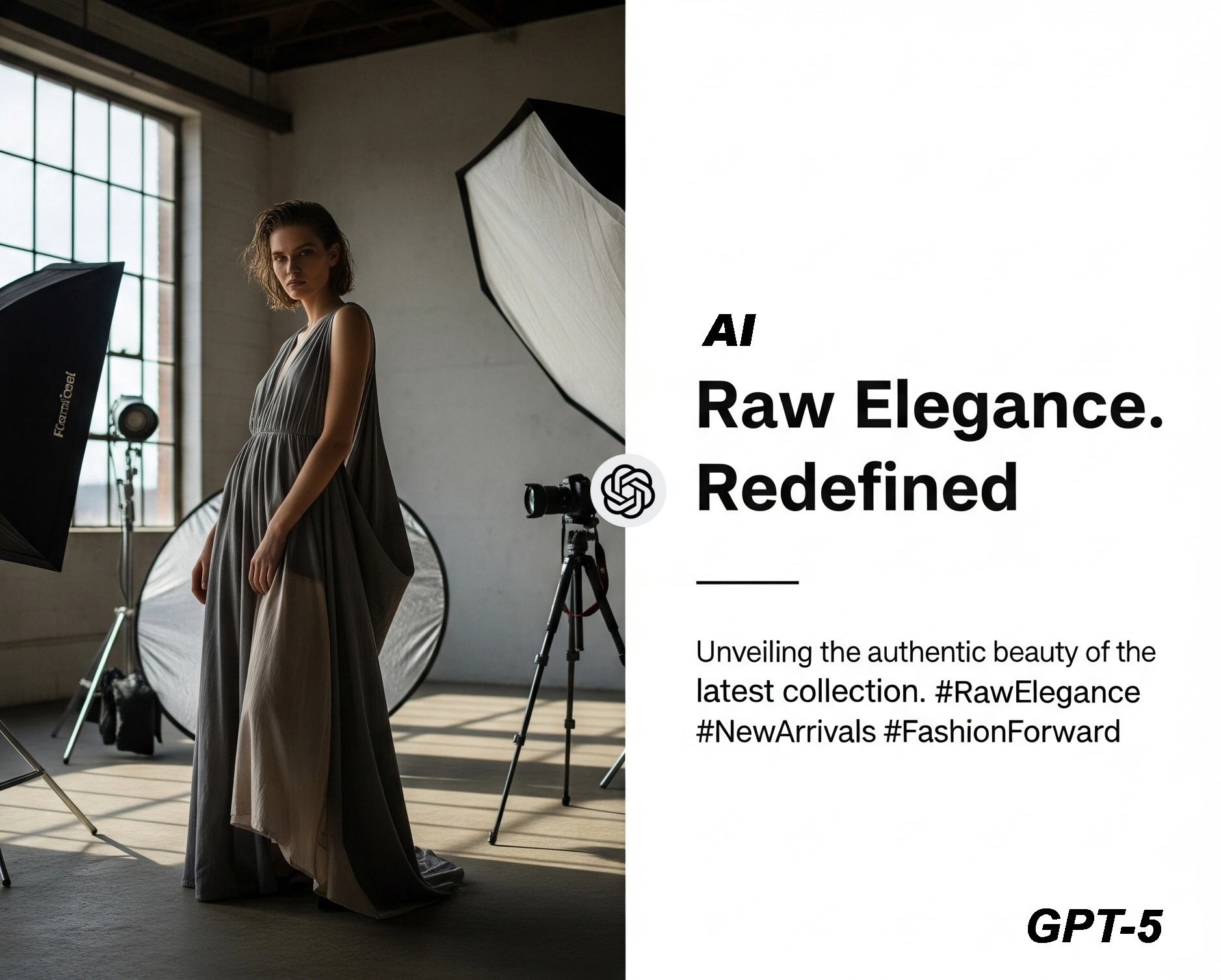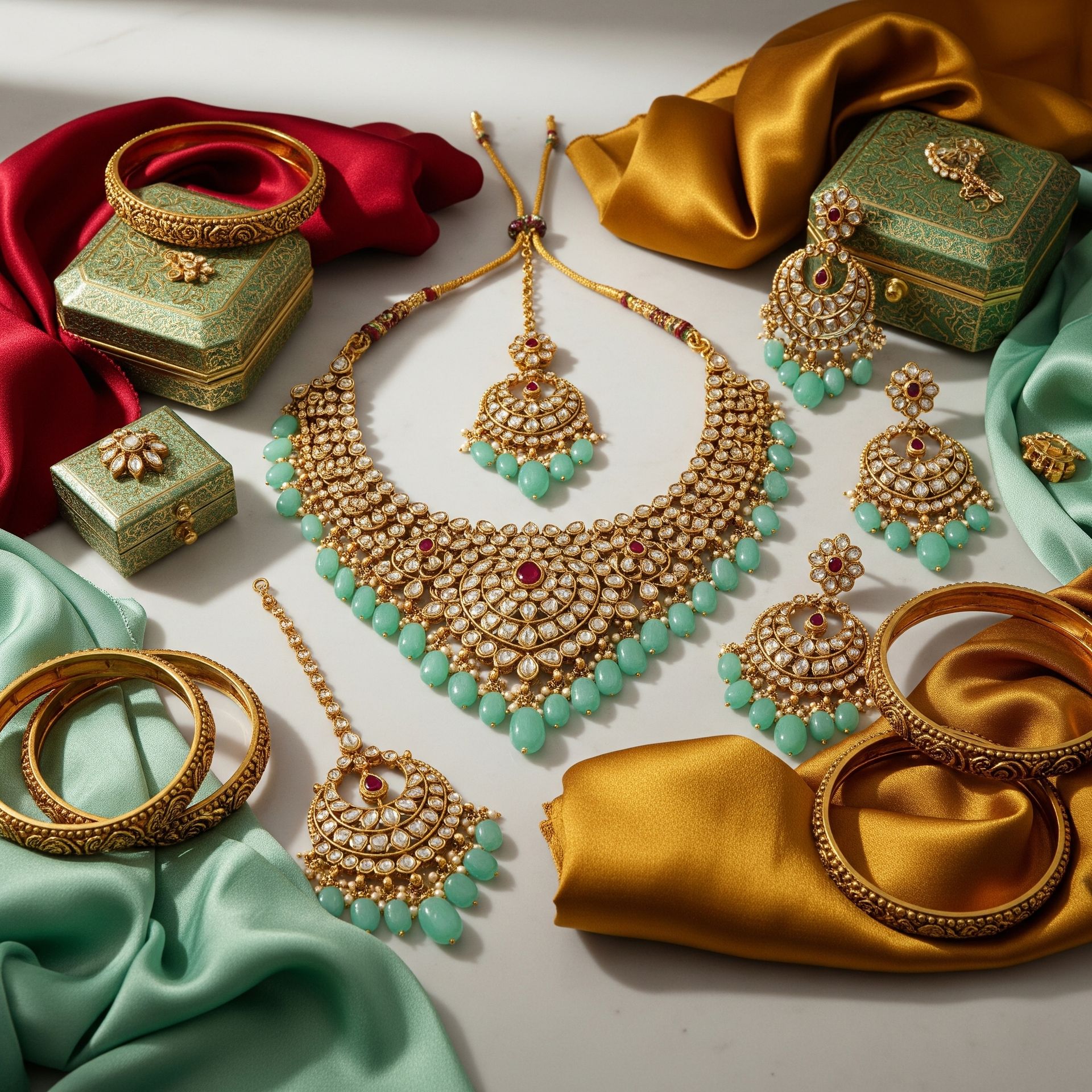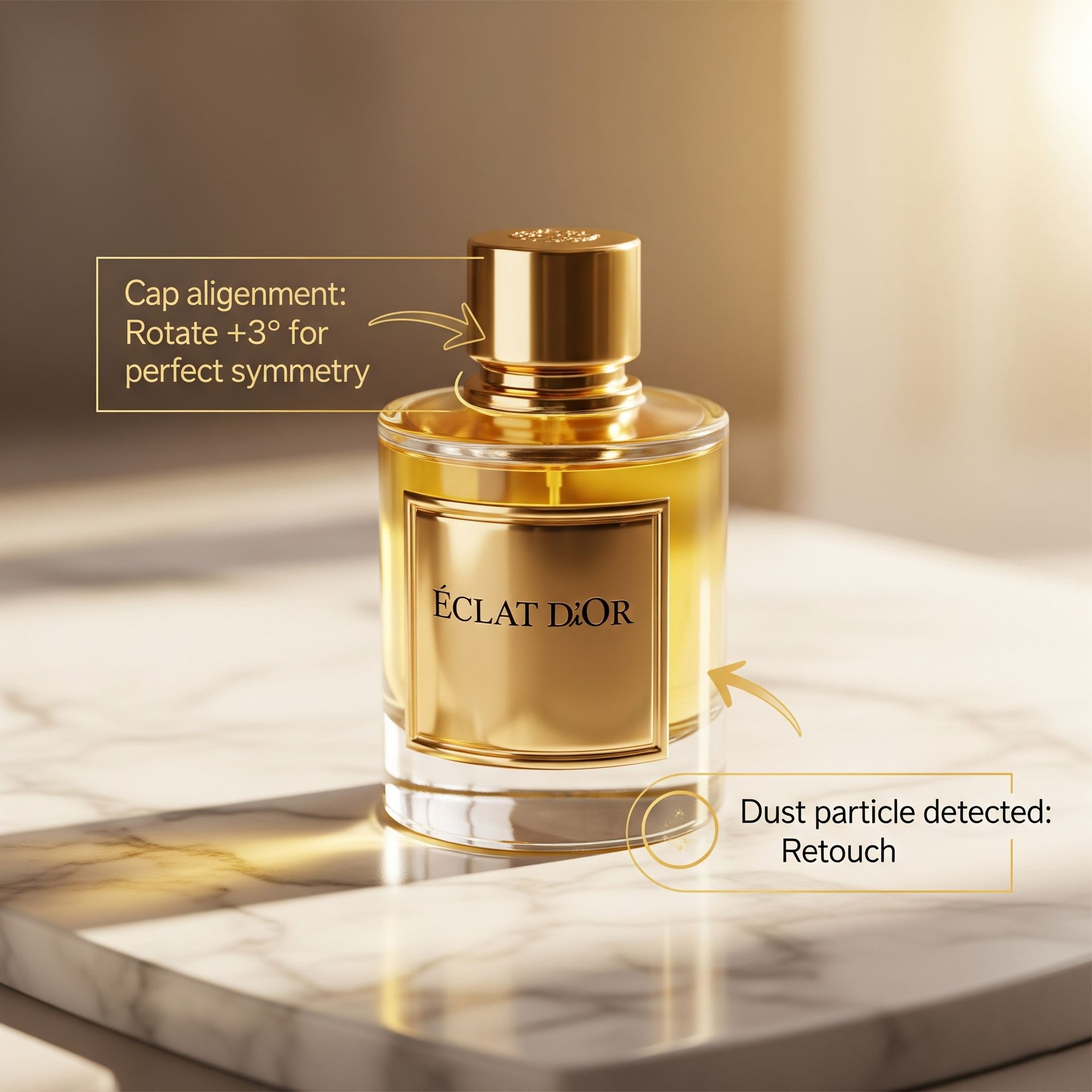From My Lens to Yours — GPT-5 for Photographers
For 24 years, I’ve been behind the camera—capturing fashion, shaping brands, and telling stories that outlive the pages of a magazine or the swipe of a digital ad scroll. In that time, I’ve seen the craft evolve from the slow chemistry of film to the instant feedback of digital, from the retouching studio to cloud-based collaboration. Now, AI is becoming the new studio assistant—whether it’s using GPT-5 for moodboard creativity or tools like Google Veo 3 for instant video ideation.
And now, another monumental shift is here.
On August 7, 2025, OpenAI launched GPT-5 globally, and India got it on day one.
For photographers, creative directors, and agencies, GPT-5 isn’t just another AI update. It’s a studio assistant, art director, copywriter, cultural consultant, and visual trend forecaster rolled into one—always on call, creating at the speed your ideas deserve.
What is GPT-5?
GPT-5 is OpenAI’s most advanced AI model to date. As GPT-5 India becomes widely accessible, It works across:
- Free tier (with usage limits).
- ChatGPT Plus / Pro for expanded daily access.
- Enterprise/Education tiers are launching next week.
- API access for integrating AI directly into your agency workflow.
And here’s the real leap:
It can understand visual + text context together—meaning you can give it an image, describe your goal, and it will respond in ways that make creative sense, not just technical sense.
Oh, and it’s multilingual—including 12 Indian languages alongside English, making it a truly native collaborator for our market.
The Upgrades You’ll Love
1. Hyper-Contextual Image Prompts

For photographers in India, GPT-5 India is more than a model—it’s a creative studio assistant. With GPT-5, that understanding has gone to the next level. These tools act like an AI moodboard for your shoot, powered by GPT-5 for photographers.
Say you ask for:
“Ethereal golden-hour portrait with a saree in motion, inspired by old Kolkata charm” — GPT-5 will interpret lighting, emotion, wardrobe, and cultural nuance in one go, without you having to break it down into technical jargon.
A single line of direction can change everything—the mood, the movement, the story. With GPT-5 that line now becomes a full creative brief in one breath. What I love about this upgrade is how it understands filmic adjectives, fabric behaviour, light mood, cultural cues, and composition together—not as separate, technical items, but as a single creative intention.
How it Helps on Set / in Pre-Viz
When I prepare mood boards or pre-visualisations, I no longer write long, fragmented notes. Instead, I feed GPT-5 a short seed: an image (or a few reference frames) + a one-liner describing the vibe. The model returns 3–5 tightly framed mood variants—each with a short paragraph about lighting, suggested camera approach (wide vs. tight, motion vs. still), fabric movement direction, and a colour temperature suggestion. That gives me a ready-to-share visual language to send to clients and the crew.
Real Shoot Examples (Practical, Not Theoretical)
- For an ethnic-wear pitch with Utsav Fashion, I used GPT-5 to generate five distinct “saree moods” from one concept: heritage dusk, market-hustle glow, poetic studio, festival flash, and minimal editorial. Each variant included suggested props (marigold garlands vs. textured wall), simple pose notes, and a short line of copy to test with the client. Two directions from that set made it to the final board.
- On a jewellery product day, GPT-5 suggested a “soft-reflective” approach—slightly lower key lighting, one reflective card near the base, and a warm fill to accent the metal. I used those notes to tweak modifier placement without a reshoot.
Prompt Templates You Can Copy-Paste (GPT-5 Friendly)
- Seed + Task: “Image: [upload]. Goal: Produce 4 mood variants for an outdoor saree campaign set in Kolkata. For each: 1-line mood name, 2-3 sentence lighting & movement direction, 2 props, suggested colour palette, 1 client-friendly tagline.”
- Minimal tech + creative: “I want a cinematic portrait: golden hour, motion from left, fabric weight medium, vintage Kolkata feel. Suggest lens feel (wide/medium/tele), 3 pose directions, and a one-line social caption.”
- Regional language option: You can write the same prompt in Hindi/Bengali — GPT-5 understands and will return culturally tuned phrasing.
Tips & Best Practices (Quick Wins)
- Be specific about motion: say “fabric should billow away from the face” rather than “make it dynamic.”
- Reference a mood, not a camera value: use words like ethereal, gritty, tactile, regal — GPT-5 maps those to technical suggestions.
- Use short iterations: ask for 3 variants, pick one, then refine: “Make this variant moodier; reduce specular highlights.”
- Add cultural anchors: mention festival names, local materials, or regional colour meanings to get sensitive, relevant outputs.
- Validate with a human: AI is brilliant at suggestion—always cross-check cultural nuances and brand voice before finalising.
Limitations to Keep in Mind
GPT-5 is powerful but not infallible. It can miss very local micro-nuances or over-generalise. Treat its outputs as pre-production accelerators, not finished directions. I always test one suggestion on a set and then calibrate.
2. Visual + Text Fusion

You can now upload a raw campaign shot and ask GPT-5 for ad headlines, social captions, or even script ideas tailored to the shot’s energy.
I’ve tested this in my own projects during a jewellery ad campaign, where the goal was to convey luxury without losing authenticity. For example, I uploaded a high-contrast image of a handcrafted necklace, and GPT instantly produced multiple tagline options—ranging from sleek and modern to deeply poetic.
During another ethnic fashion campaign pitch, I uploaded moodboard frames, and GPT generated three compelling tagline directions—one poetic, one minimalist, and one edgy. The client loved two of them so much that they made it to the final campaign deck.
What stood out to me was how the AI could merge visual cues with cultural and emotional context—almost like having an art director and a copywriter in one. This fusion makes GPT-5 for photographers feel like ChatGPT for photographers meets an art director. For other photographers, this means you can quickly test different tonal directions before committing to a final campaign narrative. It’s also an excellent way to explore bold, creative territory that you might hesitate to pitch without a visual-text mockup in hand.
3. Advanced Colour Context

AI colour palettes are more than just pretty combinations—they’re cultural narratives. In India, they carry deep cultural meaning—marigold for celebration, white for simplicity, red for tradition, and pastel pink for modern elegance.
GPT-5 understands colour psychology + regional context. While working on a bridal jewellery campaign, I asked GPT to design a palette that felt both royal and fresh for North Indian audiences. The AI suggested deep vermilion, antique gold, and a whisper of mint green—which perfectly matched the mood I was going for.
What makes this powerful is that the AI doesn’t just pick “pretty” colours—it interprets emotion, geography, and audience demographics. For instance, the same bridal collection marketed in Southern India might lean toward temple gold tones and turmeric yellows, whereas for an urban millennial audience, champagne hues and rose gold might resonate more.
Why it matters: In visual marketing, colour is the first emotional handshake between a brand and its audience. Choosing the wrong tone can feel like speaking the right words in the wrong language. This means creative teams can now bridge cultural storytelling with brand identity faster than ever. Instead of spending hours in trial-and-error colour boards, GPT-5 can propose refined palettes in seconds—often hitting that sweet spot between tradition and trend.
It’s part of a growing suite of AI photography tools, streamlining creative planning for photographers with GPT-5.
In short, in a marketplace drowning in visuals, the campaigns that resonate are the ones that understand the viewer before the first frame is shot. AI isn’t replacing creative instinct—it’s amplifying it.
4. Live Creative Brainstorm Mode

Unlike older models, GPT-5 can keep the flow of your creative conversation alive—no more losing context or starting from scratch. And because it remembers context, your creative flow feels uninterrupted — almost like you’ve been in a three-hour brainstorming sprint without ever losing the thread. This makes it feel less like a tool and more like a true creative partner.
In a recent luxury watch ad pitch, I explored “urban dusk” as the core mood. GPT-5 remembered not just the setting and target audience, but also the exact lighting style, colour accents, and brand positioning we’d discussed earlier. So, when I shifted from storyboard concepts to tagline suggestions, it kept everything perfectly in sync—delivering lines that felt born from the same world as the visuals.
This memory-driven brainstorming is where GPT-5 shines. You can jump between ad copy, mood boards, and product styling without derailing the creative momentum. It’s like having an art director, copywriter, and strategist all in the same room—available 24/7.
I’ve even pushed it further by asking GPT-5 to cross-reference my visual ideas with competitor campaign trends, ensuring my concepts stand out both creatively and commercially.
5. In-Frame Editing Suggestions

Upload a draft image, and GPT-5 can suggest composition tweaks, lighting adjustments, or prop changes for stronger storytelling.
I tried this on a product photography setup for a luxury perfume — GPT-5 suggested lowering the main light by 15°, adding a reflective card for base highlights, and introducing a soft background texture. The final shot felt more premium without reshooting everything from scratch.
What impressed me most was its attention to micro-details. It flagged that the cap alignment was slightly off by 3°, and even detected a speck of dust on the bottle’s edge — something I might have missed during the shoot. By addressing these issues in post-production, the image achieved a nearly flawless finish without being over-polished to the point of sterility.
For photographers and brands, this isn’t just about saving reshoot costs — it’s about elevating quality control to an almost forensic level. In high-end advertising, these tiny refinements often separate “good” from “world-class.” And in today’s visual economy, where every pixel is a brand ambassador, world-class is the only category that gets remembered.
Why This Matters for Indian Photographers & Agencies
In a market where timelines are shrinking and expectations are skyrocketing, GPT-5 is a force multiplier.
Here’s what it makes possible:
- Mood boards in minutes, not days.
- Campaign stories without endless back-and-forth.
- Social media calendars generated from a single day’s shoot.
- Culturally precise brand palettes for pan-India campaigns.
- Visual + copy synergy without hiring extra resources.
India’s Creative Edge
India’s photography industry—from high fashion to luxury weddings to e-commerce—thrives on visual drama and cultural authenticity. GPT-5 arrives at a time when global brands are looking here for style and scale.
As I see it:
“GPT-5 is like having a new assistant in the studio — one who knows Paris trends, Mumbai moods, and your brand story equally well.”
Trend Watch: The Next 3 Years of AI + Photography
- Create an AI Moodboard to Shoot → Instant creative alignment with clients.
- Run Adaptive Ad Campaigns → Copy and colour tweaks based on regional audience response.
- Use AI-Assisted Post-Production → Smart masking, retouch suggestions, and consistency checks.
- Form Photographer-AI Partnerships → Human vision + AI precision = premium brand storytelling.
How I’ve Already Used GPT in Advertising Campaigns
In several of my past high-profile brand shoots, AI has quietly worked behind the scenes — long before GPT-5 was even on the scene.
From building moodboards that helped fashion clients visualise their collections before a single frame was shot to mapping out product placement grids for luxury jewellery campaigns, AI has acted like an unseen creative collaborator. At first, I used it tentatively — now, it’s part of my default toolkit. It’s been there when pitching ideas to clients, helping them “see” the concept instead of just hearing about it.
One particularly memorable instance was a luxury interiors project where the client wasn’t convinced about a proposed lighting mood. I ran the concept through AI, producing a quick visual mockup that instantly sold the idea in the boardroom. That project went on to become one of the most talked-about in its category.
Now, with GPT-5’s vastly improved contextual understanding, the role of AI is evolving from a silent assistant to a strategic creative force. I can already see it becoming central in:
- Visualising full campaign aesthetics before a single photoshoot day.
- Suggesting cross-platform creative adaptations that preserve brand coherence from Instagram to billboards.
- Guiding post-production with pixel-perfect notes, so the final output looks as intentional as the concept.
For me, the takeaway is clear: what started as an experimental add-on is fast becoming a non-negotiable part of the advertising toolkit.
How to Start Using GPT-5 Today in India
- Visit chat.openai.com.
- Log in with your account (free users get daily limits).
- Upgrade to Plus or Pro for uninterrupted access.
- Agencies: connect via API for integrated creative workflows.
Last Shot – The Human Eye Still Leads
No matter how advanced AI becomes, it can’t replace the instinct of a photographer’s eye—that moment when you decide the frame is right.
But as a creative partner, GPT-5 can:
- Shorten your prep time.
- Elevate your pitches.
- Keep you inspired between assignments.
So yes—I’m very excited to explore GPT-5. And if you’re a fellow photographer, brand strategist, or art director—I’d say, this is the moment to experiment.
The future just walked into the studio.